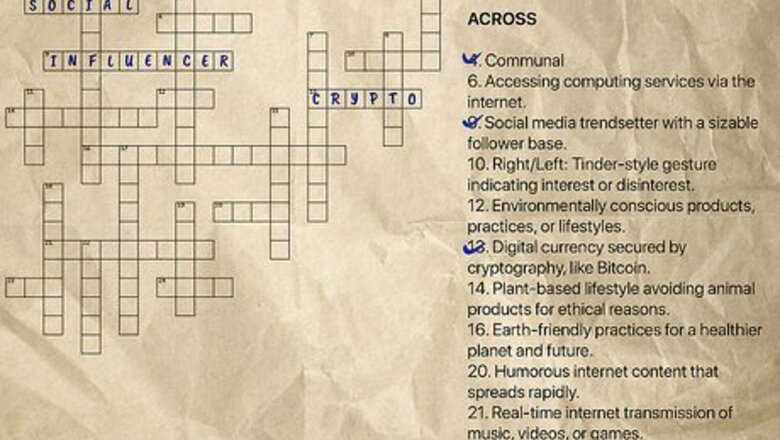
views
Start with the easiest-to-solve clues.

Solve any problems you know the answers to. Solving easy clues first will help in the long run, as you'll fill in letters for the more difficult answers.
Move on to fill-in-the-blank clues.
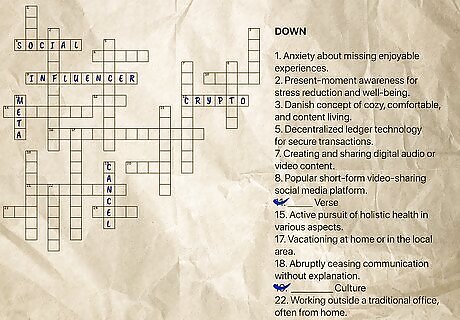
These are typically easier than other clues. These clues are usually in the form of a sentence or phrase, asking you to find the word that fits in the blank space. Complete as many of the fill-in-the-blank clues as you can in the "across" and "down" categories. Pro Tip: Use a pencil to write your answers, especially if you're not sure if they're right, so you can erase them later as needed.
Solve shorter answers next.

Move on to answers with 3 to 5 letters to help fill in the empty spaces. Shorter answers are a little easier to answer than longer ones. Focus on clues with 3, 4, or 5 letters next. Remember, the more space you fill up in the puzzle, the easier it'll be to identify harder words and clues. Pro Tip: Crossword answers tend to range from 3 to 21 letters.
Use the puzzle's theme to solve clues.

All answers will fit within the crossword theme. More often than not, crosswords follow a specific theme. Perhaps you're completing a "holiday," "TV shows," or "90s" puzzle. The puzzle's clues usually revolve around this theme, and knowing the general topic of the clues can help you make an educated guess or jump to an answer. For instance, if you're doing a puzzle themed around "games," one clue may be a 5-letter word described as "Black and white set." Knowing that you're focusing on games, you can come to the answer "chess." Pro Tip: Need help figuring out what the theme is? Check out the puzzle's title!
Study missing letters to find potential options.
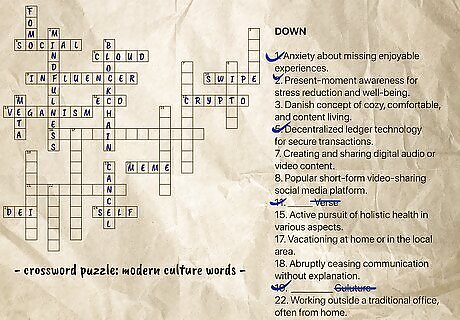
The more answers you fill in, the easier it'll be to make an educated guess. Once you have more than half of the crossword filled in, look at which "squares" in the puzzle are missing a letter. Then, check which clue the answer corresponds to. Now you can use deductive reasoning to determine the answer. For example, say you have the clue "Black Halloween animal," and the answer is a 3-letter word. The entry that crosses the second letter of the clue is "A crispy breakfast meat," which you've solved as BACON. Now you know the first letter of the "Black Halloween animal" is "B," so you may jump to the answer BAT. Pro Tip: This technique is usually called "using the crossings."
Check the clue’s phrasing for hints.
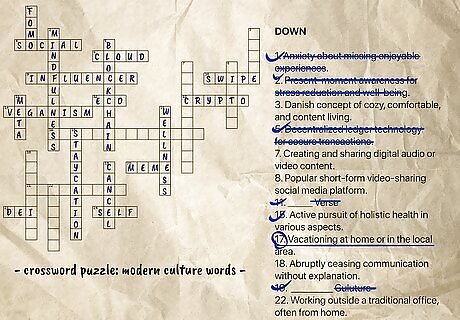
The tense and format of the clue can contain helpful information. Whether or not the clue ends in a question mark, asks for a proper name, or refers to a particular figure of speech can help you crack the code. If the clue ends in a question mark, the solution probably requires an offbeat interpretation (clue: "Mental block?"; answer: RUBIKSCUBE). If a clue is in a specific tense, the answer must be in the same tense (clue: "Cooked"; answer: BAKED). If a clue is plural, the answer must also be plural (clue: "Steps on a scale?"; answer: TONES). An answer's part of speech must match the clue's. In other words, if the clue can be a verb and a noun, the answer must be too. Pro Tip: Difficult answers usually have straightforward clues, while easy answers come from trickier clues.
Take a break if you’re stuck.

If you're getting frustrated by the puzzle, do something else for a bit. There's no harm in setting the crossword down and coming back to it later—there's no time limit! Go for a walk, do the dishes, or watch a TV show. Do whatever you have to do to clear your mind. This way, you can return to the puzzle later with a clear and open mind. Pro Tip: Some crossword experts like to time themselves while completing a puzzle. If you're a beginner, focus on finishing the puzzle instead of how fast you solve it—it doesn't have to be a race.
When in doubt, guess.
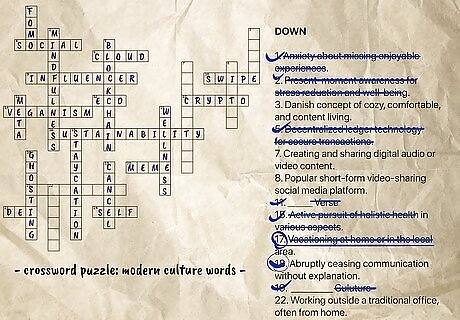
Use deductive reasoning to make an educated guess, if you have to. There's no harm in making a guess here and there. If you think you know an answer, write it down. Then, if you continue the puzzle and the answer doesn't seem to fit anymore, no worries. Simply erase your previous answer and try again.
Look up information when you're stumped.
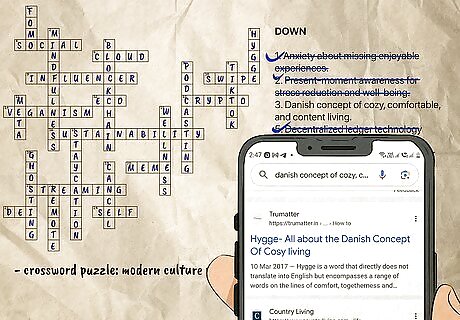
It's totally fine to turn to the internet or a dictionary. This can be especially helpful if you're making some guesses along the way—sometimes, even the pros have to fact-check themselves. After all, no one knows everything. Simply look up the clue itself online or type in keywords (such as dates and the puzzle's theme). Don't think of it as cheating; think of it as learning something new! Pro Tip: Ask a friend for help. If you're hesitant about using the internet, go for an old-fashioned form of communication: talking. Ask a family member or nearby friend if they know anything about the clue.




















Comments
0 comment